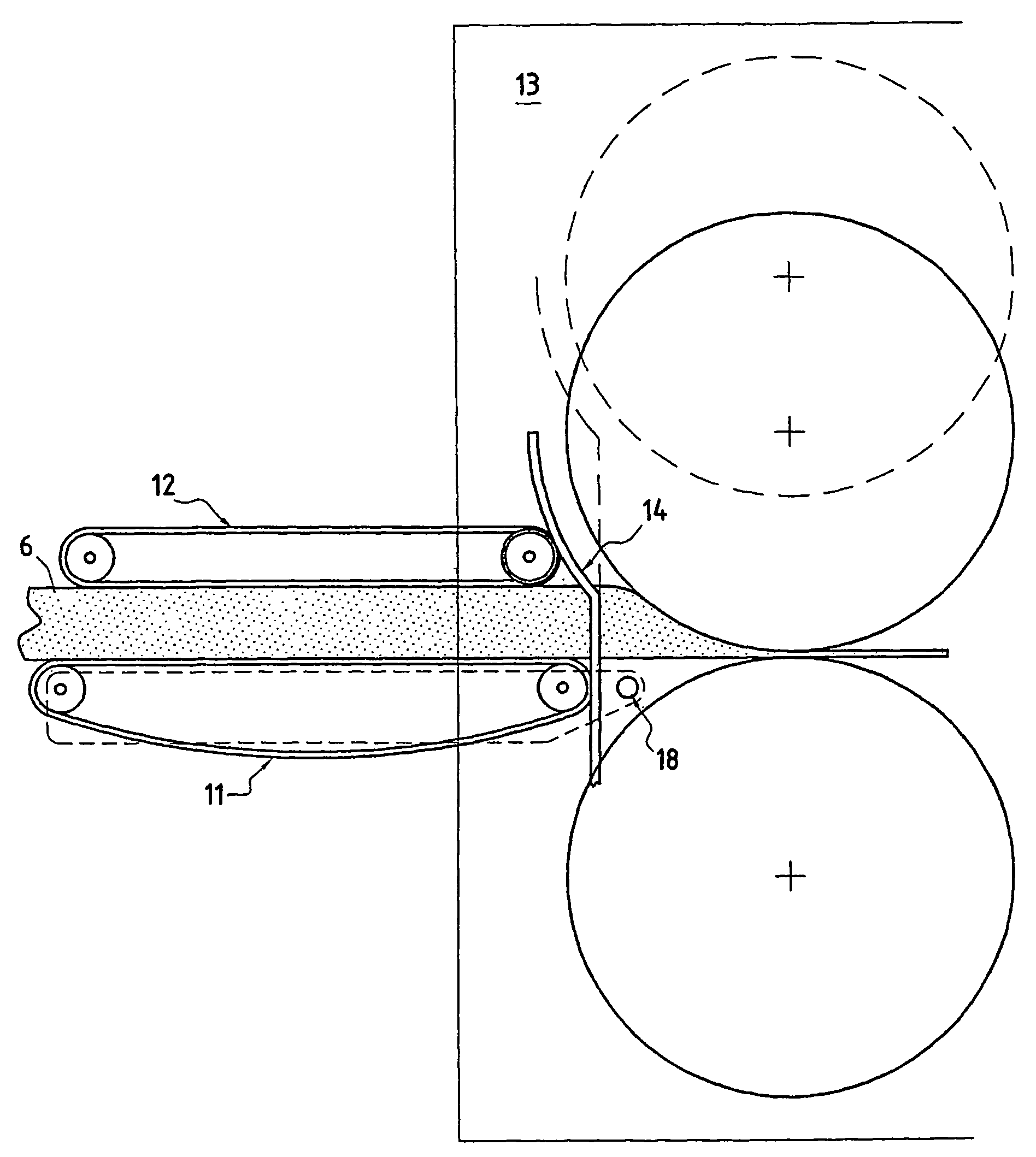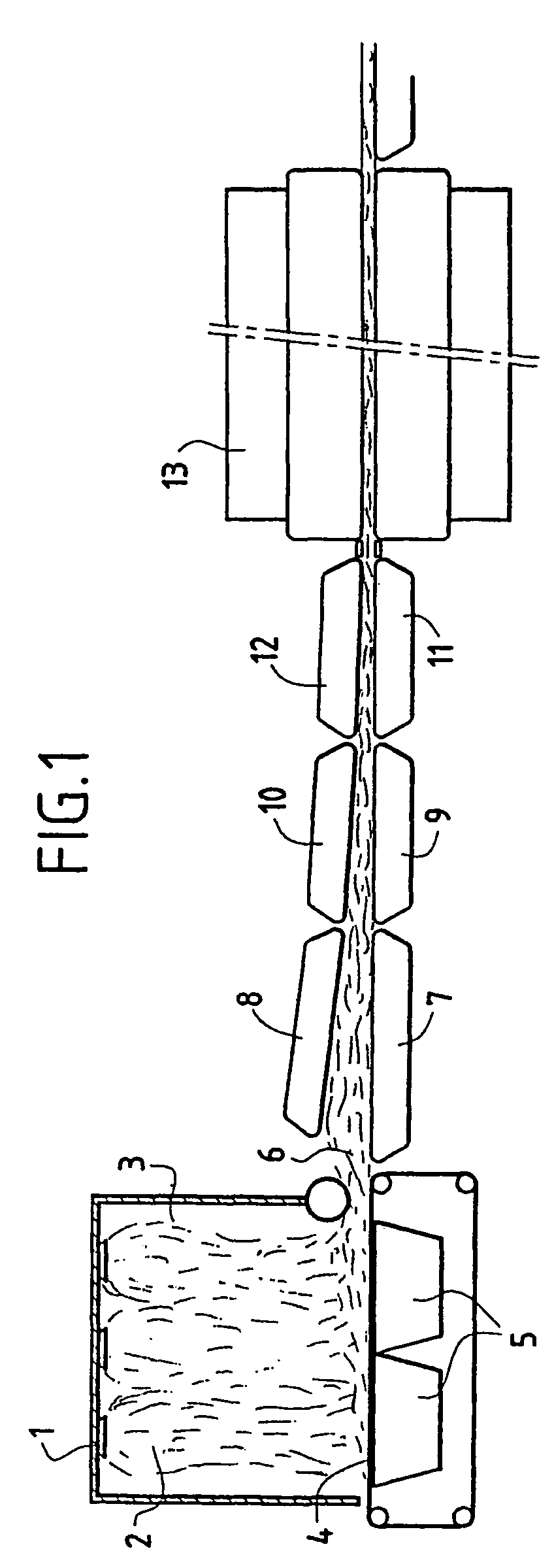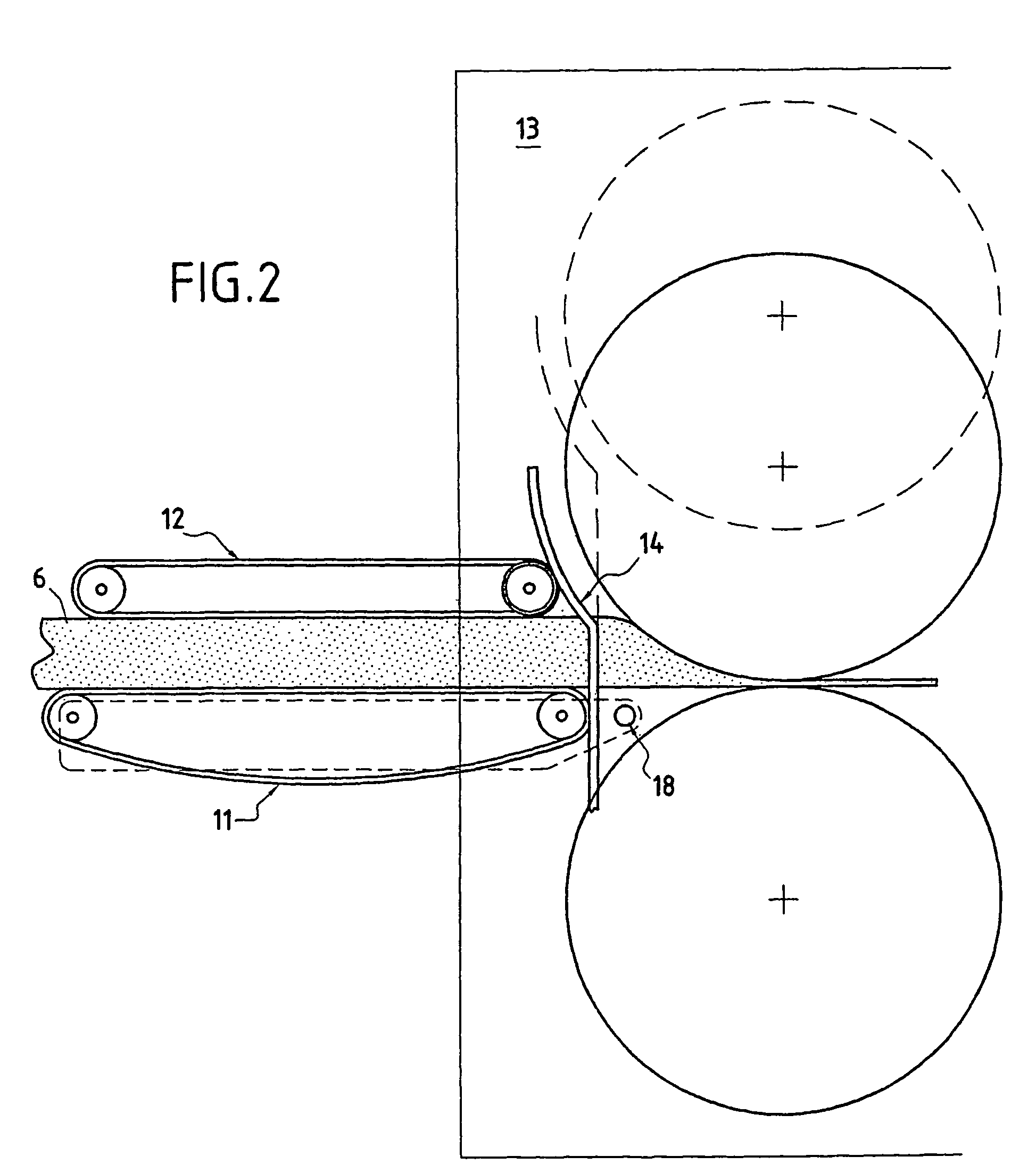Method and device for making mineral fiber felts
a mineral fiber and felting technology, applied in the field of felting formation, can solve the problems of not being able to improve other properties such as tear resistance, not being able to meet the needs of use, etc., and achieve the effect of reliable and simpl
- Summary
- Abstract
- Description
- Claims
- Application Information
AI Technical Summary
Benefits of technology
Problems solved by technology
Method used
Image
Examples
Embodiment Construction
[0042]FIG. 1 shows the overall context in which the present invention may advantageously be employed.
[0043]This figure shows diagrammatically a line for manufacturing felts 6 formed from mineral fibers, also called rock wool or glass wool. In a known manner, such a line comprises one or more spinning devices 1 intended to form fibers 2 which are thrown off from the spinning device or devices 1 in a receiving chamber 3 at the base of which is placed a conveyor 4 onto which the fibers drop.
[0044]Preferably, one or more vacuum boxes 5 are located beneath the conveyor 4 so as to suck on and compact the fibers on the conveyor 4.
[0045]A web or felt 6 is thus formed; on leaving the chamber 3, the felt 6 is taken up between two conveyors 7, 8 intended to compress it in its thickness direction.
[0046]The felt 6 is then compressed longitudinally by passing between pairs of upstream conveyors 9, 10 and downstream conveyors 11, 12, the speeds of which are such that the speed of one pair, 11, 12,...
PUM
| Property | Measurement | Unit |
|---|---|---|
| thickness | aaaaa | aaaaa |
| thickness | aaaaa | aaaaa |
| distance | aaaaa | aaaaa |
Abstract
Description
Claims
Application Information
 Login to View More
Login to View More - R&D
- Intellectual Property
- Life Sciences
- Materials
- Tech Scout
- Unparalleled Data Quality
- Higher Quality Content
- 60% Fewer Hallucinations
Browse by: Latest US Patents, China's latest patents, Technical Efficacy Thesaurus, Application Domain, Technology Topic, Popular Technical Reports.
© 2025 PatSnap. All rights reserved.Legal|Privacy policy|Modern Slavery Act Transparency Statement|Sitemap|About US| Contact US: help@patsnap.com



